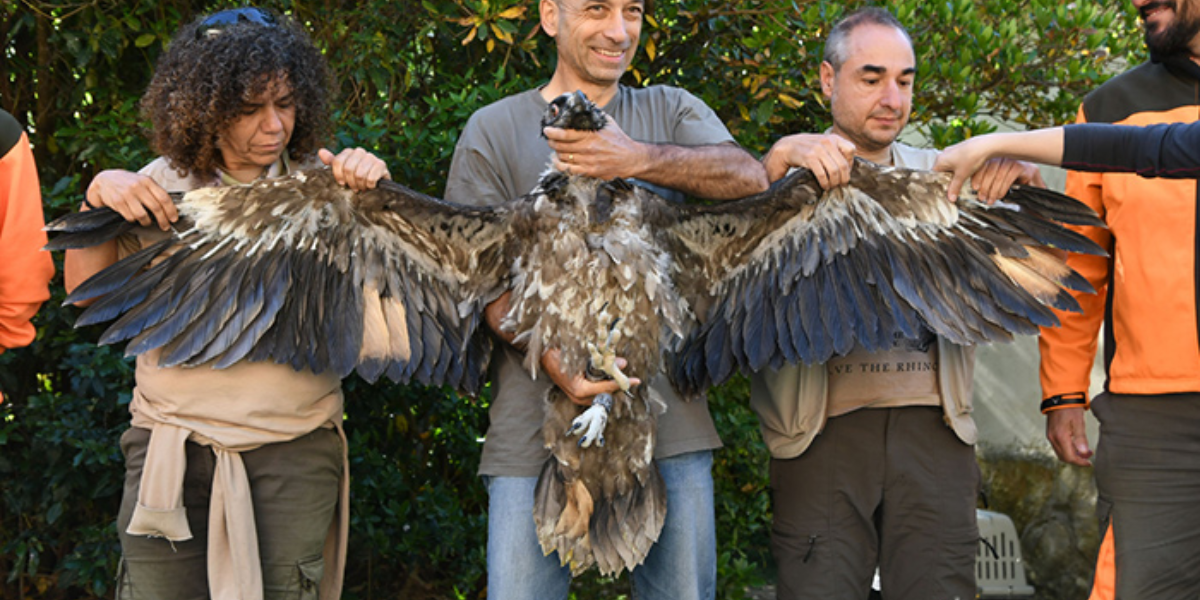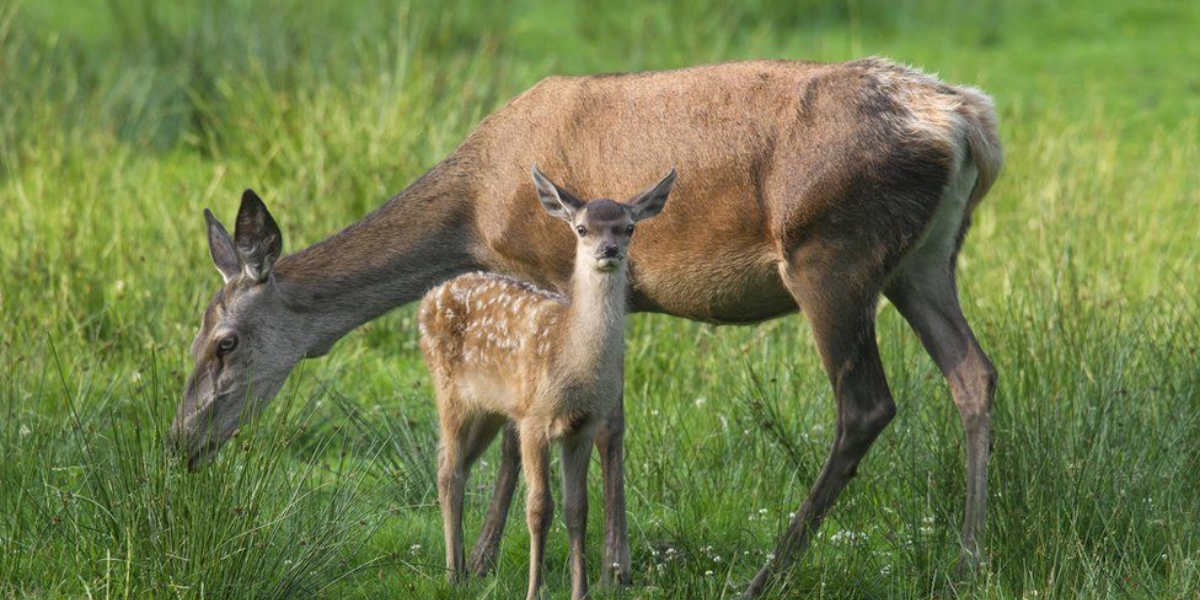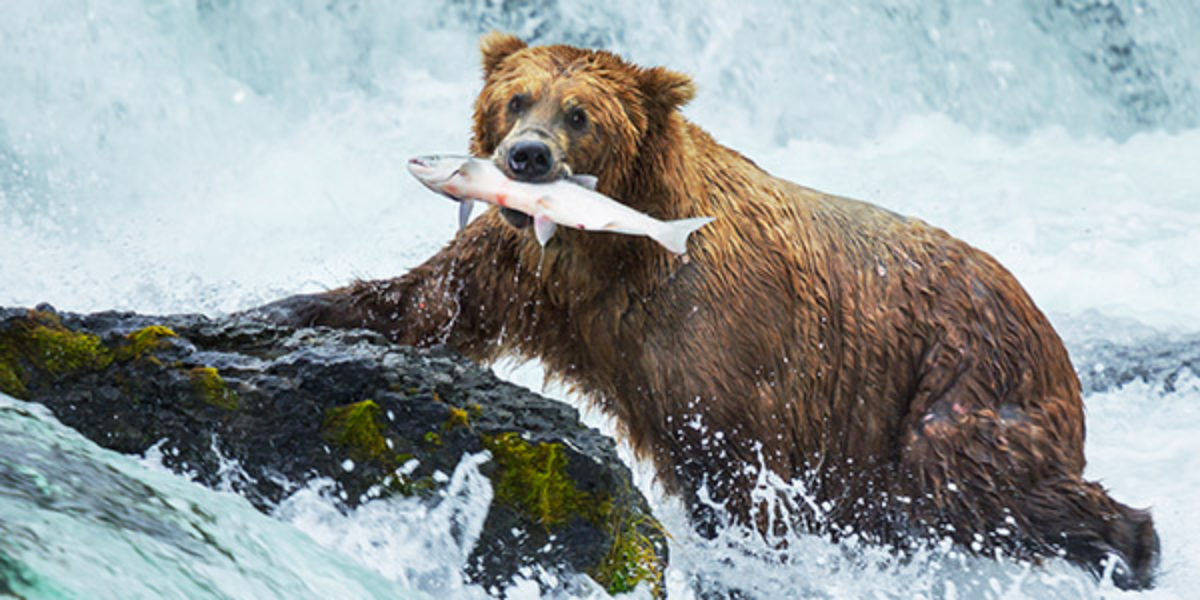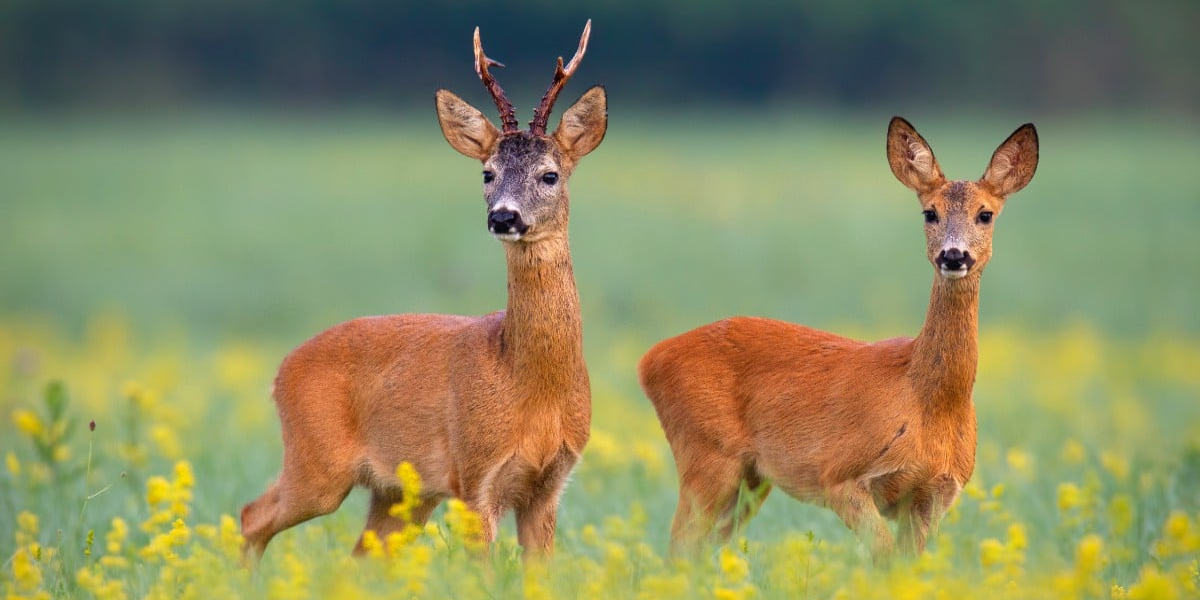11 Interesting Animals in Switzerland – You Might Not Know About
Switzerland, is renowned for its picturesque landscapes, and a vast variety of interesting animals. From the majestic Swiss Alps to serene lakeshores, Switzerland hosts a diverse range of interesting animals, both unique and, in some cases, endangered.
The iconic ibex, with its impressive curved horns, graces the Alpine regions, while the elusive lynx quietly roams the dense woodlands. Moreover, endangered species like the bearded vulture and the European otter find refuge in Switzerland’s conservation efforts.

Apart from having rich wildlife, the Swiss animals are also facing challenges, with some animal species categorized as “Endangered Species,” and “Critically Endangered.”
Where to Find The Top Wild Animals In Switzerland
Chachois are renowned Swiss goat anthology and are able to grow at high elevation in Swiss Alps regions. Tourists can immerse themselves in the splendor of Swiss national parks, such as the Swiss National Park and the Parc Ela, where activities like hiking, wildlife observation, and educational programs offer a holistic experience.
Best Places to Spot Interesting Animals in Switzerland – (With Interesting Pictures)
Switzerland, known for its scenic beauty and pristine landscapes, also offers wildlife enthusiasts unique opportunities to spot interesting animals in their natural habitats.
From the towering peaks of the Swiss Alps to the lush meadows and tranquil lakes, the country’s diverse ecosystems provide some of the best places to encounter an interesting array of wildlife.
Whether exploring alpine regions known for elusive ibex and chamois, or venturing into verdant valleys home to red deer and bearded vultures, Switzerland promises unforgettable wildlife encounters.

In this blog, we have gathered 11 interesting animals in Switzerland, and the best places to spot them in Switzerland.
Swiss National Park
The Swiss national park nestled in the heart of the Swiss Alps. Covering over 65,000 acres, this pristine sanctuary is home to a captivating array of interesting animals in Switzerland. Visitors can witness the elusive ibex, red deer, chamois, and golden eagles thriving in their undisturbed habitats.

As visitors traverse the park’s well-maintained trails, they may encounter the majestic ibex, nimble chamois, and red deer, showcasing the rich wildlife that thrives in this alpine sanctuary.

The mesmerizing landscapes within the park, from alpine meadows to dense forests and rocky peaks, create an enchanting backdrop for wildlife enthusiasts.
This park was established in 1914, and remains an ecological sanctuary, allowing visitors to connect with nature while contributing to the conservation of these interesting Swiss animals.
Golden Eagle (Aquila chrysaetos)
The Golden Eagles are a majestic bird of prey found across diverse regions, including North America, Europe, Asia, and parts of Northern Africa. This impressive raptor thrives in a variety of natural habitats, from mountains and open landscapes to tundra and steppes.

Their expansive range encompasses countries like the United States, Canada, Russia, Spain, and Switzerland. In Switzerland, the Swiss Alps provide a prime location for spotting Golden Eagles as they soar gracefully above mountainous terrains.
These eagles are extremely territorial and opportunistic hunters, with a diet comprising mammals like hares and ground squirrels, as well as birds and carrion. Currently listed as “Least Concern” on the IUCN Red List, Golden Eagles face threats such as habitat loss, human disturbance, and poisoning.
Mountain Hare (Lepus timidus)
The Mountain Hares are one of the interesting animals in Switzerland, and found in various countries, including Scotland, Scandinavia, the Alps, and parts of Asia. These resilient creatures inhabit mountainous regions, preferring open landscapes with rocky terrain and heather-covered slopes.

Their fur changes color with the seasons, providing excellent camouflage against the snowy landscapes in winter and blending into the rocky environment during the warmer months.
Mountain Hares primarily feed on grasses, herbs, and shrubs, adapting their diet to seasonal changes. In Switzerland, prime locations for spotting Mountain Hares include the Swiss Alps, especially areas like Engadin and Arosa, where their natural habitat is abundant.
On the IUCN red list of threatened species, these hares are listed as “Least Concern,” However, their population is facing threats such as climate change, habitat loss, and hunting pressure.
Brown Bear (Ursus arctos)
Brown bears are one of the most interesting animals in Switzerland. They are omnivores found in a variety of countries across Europe, Asia, and North America. In Europe, they roam the forests and mountains of countries like Austria, Bulgaria, Finland, France, Italy, Poland, Romania, Slovakia, Slovenia, Spain, and Sweden.
Their natural habitat ranges from dense alpine forests and tundra to subalpine meadows and wetlands.

These alpine animals are opportunistic eaters, adapting their diet to the seasons and what’s available. Their diet includes berries, nuts, roots, insects, fish, and small mammals. In some regions, brown bears may even prey on larger animals like deer or elk.

Despite their “Least Concern” status on the IUCN Red List, the brown bear population faces various threats. Habitat loss due to deforestation and development fragments their ranges and disrupts vital food sources. Poaching and human-bear conflict further endanger their populations.
The Wild Boar (Sus scrofa)
Wild boars are one of the interesting animals in Switzerland, and are formidable omnivores. These interesting animals arewidespread animals Europe, Asia, and even parts of Africa. In Europe, they thrive in countries like Austria, Belgium, France, Germany, Italy, Spain, Sweden, and Switzerland.

Their natural habitat is equally diverse, encompassing deciduous and mixed forests, open heathlands, reed beds, and even agricultural land. The wild boar is a dangerous animal, and opportunistic feeder and adjust their diet seasonally, munching on acorns, roots, tubers, berries, and insects in the warmer months.
They also readily feast on carrion, small mammals, and even crops if available. Switzerland offers several opportunities to spot wild boars, particularly in the Jura Mountains, the northern Swiss plateau, Ticino, and Valais.

The Wildnispark Zürich even provides a dedicated enclosure for visitors to observe these fascinating creatures up close. The IUCN Red List classified wild boars as “Least Concern.”
However, their populations face various threats, including habitat loss due to deforestation and agricultural expansion, fragmentation by roads and fences, and hunting.
Additionally, diseases like African swine fever pose a significant threat, particularly in vulnerable populations.
Red Deer (Cervus elaphus)
Red deer are one of the most interesting animals in Switzerland. These interesting animals are found in Europe, gracefully roaming the forests and mountains of over 20 countries, including Austria, Bulgaria, Croatia, Slovenia, Spain, Sweden, and Switzerland.

Their preferred habitat consists of mixed deciduous and coniferous forests with open meadows and clearings for grazing. Red deer are herbivores, munching on grasses, leaves, fruits, and bark throughout the year.
In summer, they feast on lush vegetation, while winter finds them browsing on tougher plant material and occasionally digging for buried herbs. Switzerland offers excellent opportunities to spot these interesting animals.
The Swiss National Park in Graubünden is a prime location, with valleys like Val Trupchun known for their abundant red deer populations. Other promising areas include the Jura Mountains, particularly in the cantons of Neuchâtel and Jura, and the cantons of Bern, Lucerne, and Ticino.
The IUCN Red List classified Red Deer as “Least Concern” globally, with an estimated population of over 1.5 million individuals. However, they face threats like habitat loss due to deforestation and development, fragmentation of corridors, and illegal hunting.
Roe Deer (Capreolus capreolus)
The Roe Deers are interesting animals in Switzerland found across Europe and Asia, inhabiting countries such as the United Kingdom, France, Germany, Russia, and China. Known for their adaptable nature, Roe Deer thrive in diverse environments, from dense forests to open grasslands.
Their preferred habitats include woodlands with a mix of open areas for grazing and thick vegetation for cover. These herbivores primarily feed on a varied diet of grasses, herbs, and shrubs.

In Switzerland, a country renowned for its diverse wildlife, Roe Deer can be spotted in places like the Swiss National Park and the Jura Mountains.
While the Roe Deer population is generally stable, it is essential to note their “Least Concern” status on the IUCN Red List. Despite this, potential threats to their population include habitat loss, natural predators, and collisions with vehicles.
Bearded Vulture (Gypaetus barbatus)
The Bearded Vulture is a fascinating bird species found in mountainous regions across Europe, Asia, and Africa. Notable countries where these intriguing birds inhabit include Spain, France, Greece, Mongolia, India, and South Africa.

The Bearded Vulture thrives in high-altitude, rugged landscapes, making its nests on cliffs and rocky terrains. These vultures are known for their distinctive appearance with feathered tufts resembling a beard, these vultures primarily feed on bones, exhibiting a unique dietary preference for carrion.
In Switzerland, one of the best places to spot Bearded Vultures is in the Alps, particularly in the Swiss National Park and the Engadine Valley. Moreover,the Bearded Vulture is listed as “Near Threatened” on the IUCN Red List, facing challenges such as habitat loss, poisoning, and disturbance, which pose significant threats to their population.
Green Toads (Bufotes viridis)
These interesting amphibians are found in mountainous and hilly regions of Switzerland They inhabit a range of environments, from meadows and forests to gardens and urban areas.
Their natural habitat consists of moist and vegetated areas near water bodies, where they breed during the spring. Green Toads are opportunistic feeders, preying on insects, spiders, and other small invertebrates.

In Switzerland, some of the best places to spot these interesting animals include the Swiss National Park, Val Müstair, and the Engadin region, where diverse landscapes offer suitable conditions for their existence.
While Green Toads are not currently listed on the IUCN Red List, they face threats such as habitat loss due to urbanization and agricultural development.
Chamois (Rupicapra rupicapra)
Chamois are captivating mountain-dwelling ungulates found in several European countries, including the alpine regions of Switzerland. These interesting animals in Switzerland inhabit mountain forests, favoring steep, rocky terrains above the tree line.

Chamois are herbivores, feeding on a variety of alpine vegetation, including grasses, herbs, and shrubs. In Switzerland, the Bernese Oberland, Engadin, and the Swiss National Park are among the best places to observe Chamois in their natural habitat, offering breathtaking landscapes where these interesting animals roam freely.
The Chamois are listed as “Least Concern” on the IUCN Red List, indicating a relatively stable population. However, they face threats such as habitat degradation due to climate change and human activities.
Alpine Marmot (Marmota marmota)
The alpine marmot has become a popular Swiss animal and has a presence at high altitudes. The Alps, the Northern Apennines, and the Tatras are the largest species of ground-dwelling squirrels. It eats grass as well as insects, spiders, worms, and grain.

Some Interesting and Dangerous Animals in Switzerland
Switzerland is generally known for its serene landscapes and wildlife that pose minimal threat to humans. However, there are a few animals that, while not inherently dangerous, may exhibit defensive behaviors if cornered or provoked.
Some of the most dangerous animals that you must watch out for are given below.
European Adder (Vipera berus): The European Adder, a venomous snake found in Switzerland, can deliver a painful bite if threatened. Although its venom is not typically lethal to humans, it can cause discomfort and, in rare cases, may require medical attention.
Ticks (Ixodes ricinus): While not an animal in the traditional sense, ticks can pose health risks. Some ticks in Switzerland carry diseases such as Lyme disease and tick-borne encephalitis (TBE), emphasizing the importance of taking precautions in wooded areas.
Wild Boar (Sus scrofa): Wild boars, though not typically aggressive, can become defensive if they feel threatened or cornered. They are known to cause property damage and may react defensively, especially the younger ones.
Red Deer (Cervus elaphus): While not dangerous in the sense of attacking humans, red deer, particularly during the mating season (rut), can become more unpredictable and may pose a risk if approached too closely.
Asp Vipers – The Most Dangerous Animals in Switzerland
These snakes are among the most hazardous animals that live and roam in Switzerland. The most dangerous animal in Switzerland currently is the aspic viper a genitalized snake. Recognition is made by the distinctively short tail and wide triangular head, and various dorsally marked features of the species that could be observed.

Frequently Asked Questions about Interesting Animals in Switzerland
What animals is Switzerland known for?
Switzerland is known for its diverse wildlife, especially in the Alpine regions. Some notable animals in Switzerland are Ibex, Chamois, Red Deer, Marmot, Golden Eagle, and European Adder.
What is the largest predator in Switzerland?
Fox is the largest predator in Switzerland, and you can spot them in Swiss National Park.
Does Switzerland have wolves?
Yes, wolves are native animals of Switzerland.
What wild animal is in Switzerland?
Deer, rabbits, foxes, badgers, squirrels, and eagles, are some of the most interesting animals in Switzerland.
What is the largest predator in Switzerland?
Foxes are largest predators in Switzerland.
Does Switzerland have wild bears?
There are only about two or three brown bears in Switzerland and they are rare.
- 12 Interesting Animals in Dominican Republic - 2024-05-02
- 8 Common Dangerous Animals in Yosemite - 2024-05-01
- 11 Interesting Animals in the Midwest - 2024-05-01

